A practical guide for journalists and climate activists
Story and photos by Ivan Sawyer García
What you say about the Amazon reveals more than you think. And it might be sabotaging planetary survival.
Here’s the reality: There are territories in the Amazon where only 5.8% of the forest has been destroyed. During those same years, government-managed “protected areas” lost between 20-30% of their vegetation.
The difference? The former are governed by Indigenous peoples. The latter, by “international experts.”
Para leer este artículo en Español haz click AQUÍ
Para ler este artigo em português, clique AQUI


This week, the second week of November, 2025, over 3,000 Indigenous leaders will converge on Belém, Brazil, for COP30—the world’s highest-stakes climate summit. That’s 25 times more Indigenous leadership than at COP26.
But here’s the brutal contradiction: while Brazil positions itself as a global climate leader, its Congress has just approved a law threatening 121 Indigenous territories.
It’s like burning down a library while declaring yourself a literature expert.
The words we use are not innocent. They’re building the world—or destroying it.
Here are the 10 language shifts that can change everything. They’re not about being “politically correct.” They’re strategically necessary. And the data backs them up.
This article is drawn from the Amazon Climate Communication Toolkit: Decolonial Media Guide. Download the entire guide free HERE.
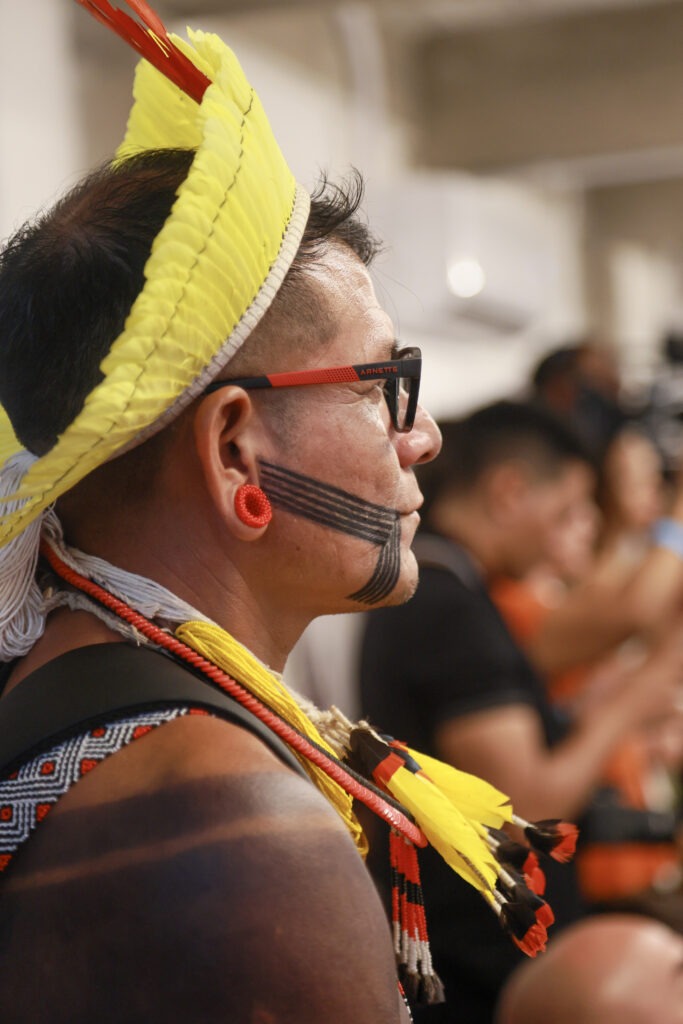
Fundamental Narrative Transformations
1. From “Indigenous Tribes” or “Indigenous Groups” to Country/Context-Specific Terminology
❌ NEVER use: “Indigenous tribes”
❌ Avoid: “Indigenous groups”
✅ Use: Country-grounded terms backed by hard-fought constitutional rights
- “Nacionalidades indígenas” (Ecuador): e.g., “the A’i Cofán nationality”
- “Povos indígenas,” “Povos originários,” “Comunidades tradicionais” (Brazil): e.g., “Indigenous peoples of the Amazon,” “riverside communities,” “traditional peoples”
- “Naciones y pueblos indígena originario campesinos” (Bolivia): e.g., “the Guaraní indigenous nation,” “peasant originary peoples”
- “Pueblos indígenas” or “Comunidades indígenas” (Colombia): e.g., “the Nasa indigenous people,” “the Uitoto indigenous community”
- “Comunidades nativas” (Amazon, Peru): e.g., “the Shipibo-Konibo Native Community”
- “Indigenous peoples of the Amazon basin” or “266+ Amazonian Indigenous nations” (International): e.g., “the Yanomami people,” “the Shuar nationality”
GOLDEN RULE: Always specify:
- ✅ “The Yanomami people”
- ✅ “The Shuar nationality”
- ✅ “The Shipibo-Konibo Native community”
Why this matters:
“Tribe” is a colonial holdover that infantilizes and denies nation status and political authority. “Group” is vague and erases governmental authority. Use correct country-specific terminology:
- Respects hard-won legal frameworks
- Recognizes diversity of legal status
- Strengthens specific political arguments
- Refuses erasure by generalization
- Clarifies rights in advocacy, journalism, and policy

2. From “Indigenous Groups” to “Climate Authorities
❌ Avoid: “Indigenous groups will participate in COP30”
✅ Use: “Indigenous territorial authorities lead COP30’s climate agenda”
“The greatest climate authorities are us, the guardians of the Earth, the Indigenous leaders.” — Toya Manchineri, COIAB
Key data: UN Special Rapporteur (August 2025) confirms that 91% of Indigenous territories remain in good ecological status—far better than other models dependent on mere “consultation.”Why:
- “Groups” suggests a collection of voices, not governing power.
- “Authorities” captures self-governance, proven systems, and ecological results.
- Territorial authority isn’t just representation—it’s a climate model that outperforms the alternatives.
3. From “COP Participants” to “Heads of State”
❌ Avoid: “Allow Indigenous participation in COP30”
✅ Use: “Indigenous leaders demand equal voice and full decision-making authority at COP30—on a par with other Heads of State.”
“Indigenous and local leaders must have the same legitimacy, decision-making power, and respect as country representatives at COP30.” —2025 Amazonia-Pacific-Australia Indigenous declaration: “
Why:
This isn’t about “inviting” Indigenous people to the table. The more than 5,000 Indigenous authorities at COP30 represent governments with the best documented conservation track record on Earth. The question isn’t “Should they participate?” but “When will they finally gain the decision-making power their results merit?

4. From “Lungs of the Planet” to “Living Ecosystem”
❌ Avoid: “The Amazon, lungs of the planet”
✅ Use: “”The Amazon as a living ecosystem”
Sample: The Amazon as a living ecosystem, governed by 266+ Indigenous nations and rich with relational stewardship,sustains more biodiversity than nearly anyplace on Earth.
— Sample: “The Amazon as a living ecosystem, governed by 266+ Indigenous nations and rich with relational stewardship, sustains more biodiversity than nearly anyplace on earth.”
Why:
- The “lungs” cliché reduces the world’s largest tropical forest to an air filter for outsiders.
- It justifies foreign control: If the forest is a “global good,” anyone can claim management.
- It erases the legitimate governance of Indigenous, Quilombola, and extractivist communities—converting complex territories into “common heritage.”
- It treats the forest as a service or commodity—ignoring centuries of reciprocal relationships that have kept the Amazon standing.
“Living ecosystem” signalsthe Amazon’s true nature—a territory, not a resource; governed, not just preserved; home to interdependent nations whose models keep the forest alive.

5. From “Stakeholder Consultation” to “Binding Consent and Territorial Authority””
❌ Avoid: “Consult Indigenous communities”
✅ Use: “Guarantee territorial authority with binding Free, Prior and Informed Consent (FPIC)”
“Safeguards and binding FPIC must guide all climate, energy, and biodiversity decisions—no project moves forward without Indigenous approval.”—COICA Pre-COP Declaration, October 2025)
Brazilian government policies routinely favor “participação”—inviting input but sidestepping true “soberania (sovereignty).” Here’s the result:
Brazilian government policies routinely favor “participação” (participation)—inviting input but sidestepping true “soberania” (sovereignty). Here’s the result:
- Where “consultation” language dominates, deforestation is 20–30%.
- Where binding sovereignty and FPIC are the standard, 91% of forests are preserved.
Why this matters:
“Consultation” means: “We ask your opinion, then do what we want.”
“Binding consent” means: “No approval, no project.. Period.”
For Amazonian territories, the distinction means survival or destruction.
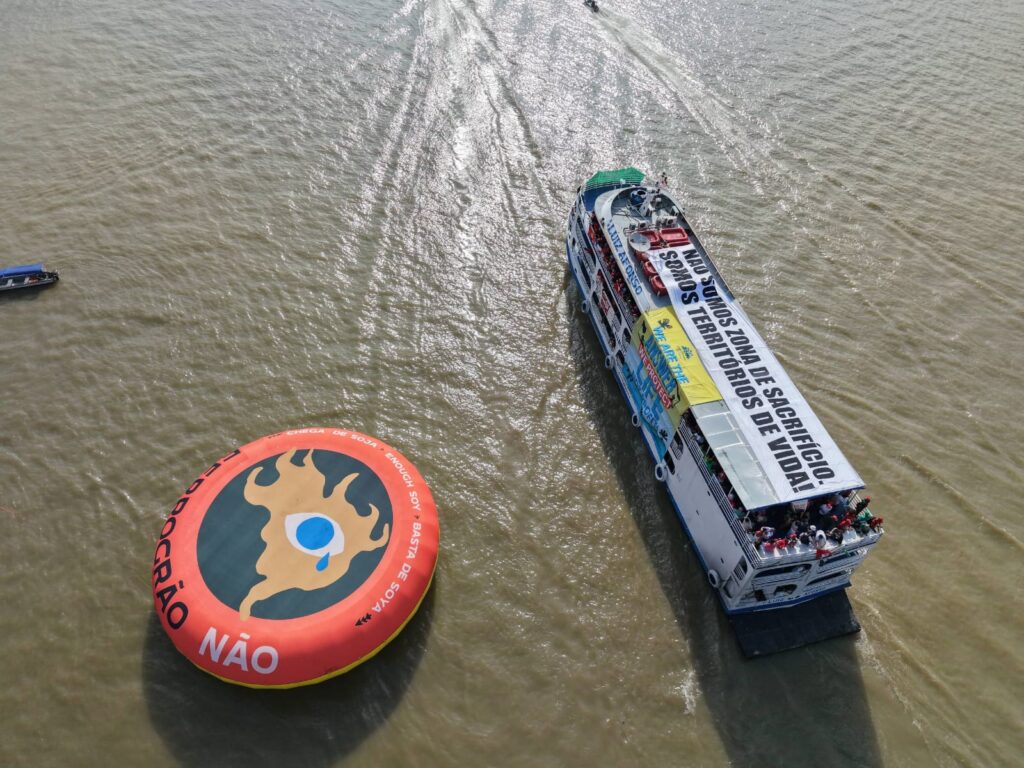
6. From “Support to Communities” to “Direct Financing Without Intermediaries”
❌ Avoid: “Allocate climate funds to Indigenous peoples.”
✅ Use: “Direct financing to Indigenous organizations—no intermediaries, no strings attached.”
“While Indigenous Peoples make up just six per cent of the global population, they safeguard 80 per cent of the planet’s remaining biodiversity – yet receive less than one per cent of international climate funding.” —State of the World’s Indigenous Peoples, Volume VI, Climate Crisis (United Nations Department of Economic and Social Affairs)
Why this matters:
- The point isn’t “help” or “aid.” It’s power: who controls project design, funding priorities, and what “success” means.
- Elimination of intermediaries: Direct financing lets Indigenous nations set the agenda for adaptation and protection—rather than being forced to follow dictates of donors or NGOs that retain funds.
- Authority over measurement: Indigenous nations define what “climate success” means for their territories—setting priorities, standards, and timelines grounded in their knowledge.
- The problem isn’t “capacity.” It’s a global financial system rigged to preserve colonial control—even in the name of climate justice.
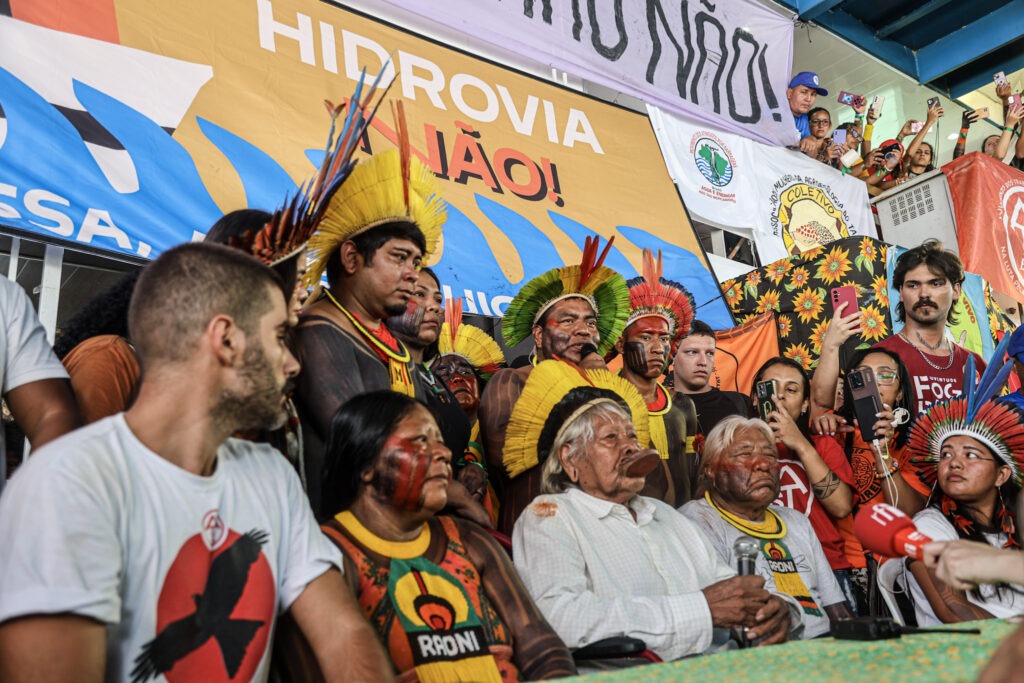
7. From “Conservation” to “Territories as Rights-Based Climate Solution”
❌ Avoid: “Nature-based solutions with Indigenous participation”
✅ Use: “Recognize Indigenous territories as rights-based climate and biodiversity solution”
— Sample: Research shows Indigenous territories across the Amazon store the majority of the region’s aboveground carbon—making them world-leading climate regulators and not just “conservation areas”.
Indigenous territories store 340 million tons of CO₂. They’re not “conservation areas”—they’re active governmental systems with superior results.
Why this matters:
- “Conservation” calls to mind museums—preserving something static, managed from the outside.
- Indigenous territories are governed, not conserved: They’re living, governmentally-managed jurisdictions that actively maintain carbon sinks, water cycles, and biodiversity with systems far more effective than any state model.
- Rights-based climate solutions mean:
- Indigenous authorities hold legal, actionable power—not just “advisory” input.
- Territorial rights are intrinsic infrastructure for the world’s climate, not a mere bonus.
- These models have empirical track records—thousands of years of results, not pilot projects.
Citations:
“Forests managed by Indigenous peoples in the Amazon remove 340 million tonnes of CO₂ each year…” — World Resources Institute, 2023
“Protected areas and Indigenous territories in the Amazon store approximately 60% of the region’s aboveground carbon, totaling 34.1 billion metric tons of CO₂ equivalent.” — Mongabay, 2025

8. From “Affected by the Crisis” to “We Are the Answer”
❌ Avoid: “Indigenous populations vulnerable to climate change”
✅ Use: “We are the answer”
Evidence: “A Resposta Somos Nós” (We Are the Answer)—COIAB’s official slogan for COP30 and the theme of Acampamento Terra Livre 2025.
“Our ways of life already offer concrete solutions to address climate change and biodiversity loss with justice and effectiveness.”—Official Position of Amazon Indigenous Peoples (ACTO 2025)
Why this matters:
- “Vulnerable” turns Indigenous nations into climate victims needing outside rescue—ignoring technical superiority proven with fewer resources.
- “We are the answer” reframes the story:
- Centers active agency, not passive problems.
- Highlights existing, scalable solutions—not dependence on outsiders or “experts.”
Puts Indigenous climate leadership at the center—not calls for their “inclusion.” This shift isn’t rhetorical—it’s reality. Indigenous-led responses are working. Now the world needs to catch up.
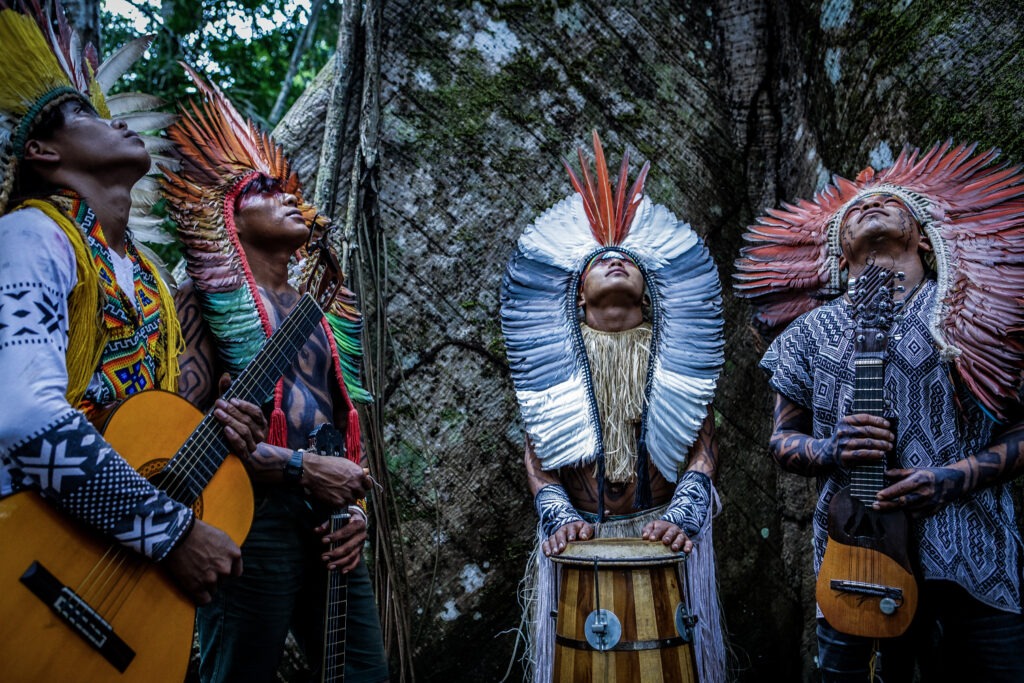
9. From “Global Common Heritage” to “Territories of Life”
❌ Avoid: “The Amazon as common heritage of humanity”
✅ Use: “Territories of life for Indigenous peoples”
“The Amazon is not a sacrifice zone, it is a territory of life for Indigenous peoples and an essential pillar for the planet’s climate balance.”—Jammer Manihuari, COICA vice-coordinator
COP30 will have the largest Indigenous participation in COP history. Brazil committed “A Resposta Somos Nós” positioning Indigenous voices centrally. Indigenous International Commission has official status.
Why this matters:
- “Common heritage of humanity” may sound generous, but ultimately justifies green colonialism—inviting external claims and erasing local authority.
- The Amazon doesn’t “belong to all humanity.” It belongs to the 266+ nations that kept it standing for thousands of years while so many “global commons” collapsed.
- COP30’s brutal contradiction: Brazil celebrates “A Resposta Somos Nós” and record Indigenous participation, yet undermines territorial rights at home with proposed laws like PL 2159/21—the so-called “Devastation Law”—threatening 121 Indigenous territories.“Territory of life” puts the rights-holders and their victories back at the center.

10. From “Include Indigenous Perspectives” to “Indigenous Leadership with Real Political Weight”
❌ Avoid: “Include Indigenous voices in decisions”
✅ Use: “International Indigenous Commission with concrete political impact, not symbolic”
“We don’t want a merely symbolic and performative institution, without concrete political impact. No one has the privilege of waiting for promises to become facts in the future: our lives are at risk now.”—COIAB statement about the International Indigenous Commission announced for COP30
The Brazilian COP30 presidency has proposed creation of the Indigenous Leadership Circle, coordinated by the Ministry of Indigenous Peoples under Minister Sônia Guajajara’s leadership.
Brazil’s COP30 Presidency has proposed an International Indigenous Commission and Circle, led by the Ministry of Indigenous Peoples under Sônia Guajajara. But Indigenous nations are clear:
It’s not about “giving voice”—it’s about genuine authority over territories, narratives, and decisions.
The International Indigenous Comission cannot be:
- ❌ A consultation space with no real power
- ❌ Symbolic window-dressing to validate already-made decisions
- ❌ Performative presence without actual leverage
It must be:
- ✅ True authority with veto power over territorial decisions
- ✅ Equal status to country delegations
- ✅ Measurable, enforceable impact on negotiations and outcomes

Quick Start Guide: What to Do TODAY
For Journalists:
Language check before publishing:
- Are you using “consultation” (avoid) or “binding FPIC” (required)?
- Are you saying “groups” or “climate authorities”?
- Is it “traditional knowledge” (weak) or “governance systems with proven results” (strong)?
- Did you use the right country-specific term (nationalities/peoples/communities), not generic?
Cite specifically:
- Never write “Indigenous leaders” or “peoples” alone—always name the individuals, nations, and specific territories.
- Double-check self-identification: How do they refer to themselves?
- Use the name of the nation or community (e.g., “Yanomami,” “Shuar,” “Kayapó”); never substitute with just Amazon Indigenous people.
Contact territorial authorities BEFORE coverage:
- Seek explicit consent, with no pressure or misleading information.
- Be fully transparent on how their input will be used; respect the right to retract consent up to publication.
- Commit to sustained, reciprocal relationships—don’t be extractive. Don’t just parachute in for single stories.

For Organizations:
Audit your language—systematically:
- Search and replace:
- “participation” → “authority”
- “groups” → “peoples” or “nationalities”
- “traditional knowledge” → “governance systems with proven results”
Create real power—not just “consultancy”:
- Don’t just add “Indigenous consultants;”create editorial authority with veto or co-ownership powers.
- Establish dedicated Indigenous reporting desks, not just freelance contributors.
- Require Indigenous authority in every territorial or biodiversity decision affecting their lands.
Redistribute revenue ethically:
- If your organization profits from stories about Indigenous territories, who benefits?
- Prioritize co-ownership and transparent resource-sharing agreements with the peoples whose land, stories and knowledge generate that value. Resource-sharing agreements.

For Climate Activists:

Reality check before sharing:
- Does your post, share or campaign position Indigenous peoples as authorities (not beneficiaries)?
- Are you reinforcing colonial tropes, or using country-specific, decolonial terms and frameworks?
- Are communities and leaders named specifically, never just “Indigenous” or “Amazonian”?
Amplify primary sources:
- Share Indigenous media directly (COICA, APIB, COIAB)
- Not just coverage about them—content created BY them
Connect struggles:
- Territorial sovereignty + climate justice = same battle
Crisis Protocol: Correcting Colonial Frameworks in Real Time
🚨 Colonial framework detected:
“The Amazon as global common good requires international management”
✅ Immediate correction:
“Amazon territories are Indigenous territories with governance systems that demonstrate 91% effectiveness in maintaining good ecological conditions. International support must strengthen Indigenous territorial authority, not replace it.”

Measurement Framework: Verifiable Narrative Transformation
📊 Immediate indicators (during COP30):
- Frequency “territorial sovereignty” vs “stakeholder consultation” in media coverage
- Specific attribution to territorial authorities vs generic “Indigenous leaders”
- Use of correct country-specific terminology
- Inclusion of Indigenous governmental data vs only cultural elements
📈 Medium-term indicators (3-6 months):
- Editorial policies adopting sovereignty language in 3+ media outlets
- Policy documents citing Indigenous governance models
- Financing mechanisms requiring binding Indigenous consent
🎯 Systemic transformation indicators (12-18 meses):
- Constitutional amendments including Indigenous territorial authority in 2+ countries
- Climate financing protocols incorporating Indigenous approval
- Recognition of Indigenous Leadership Circle as instance with real power
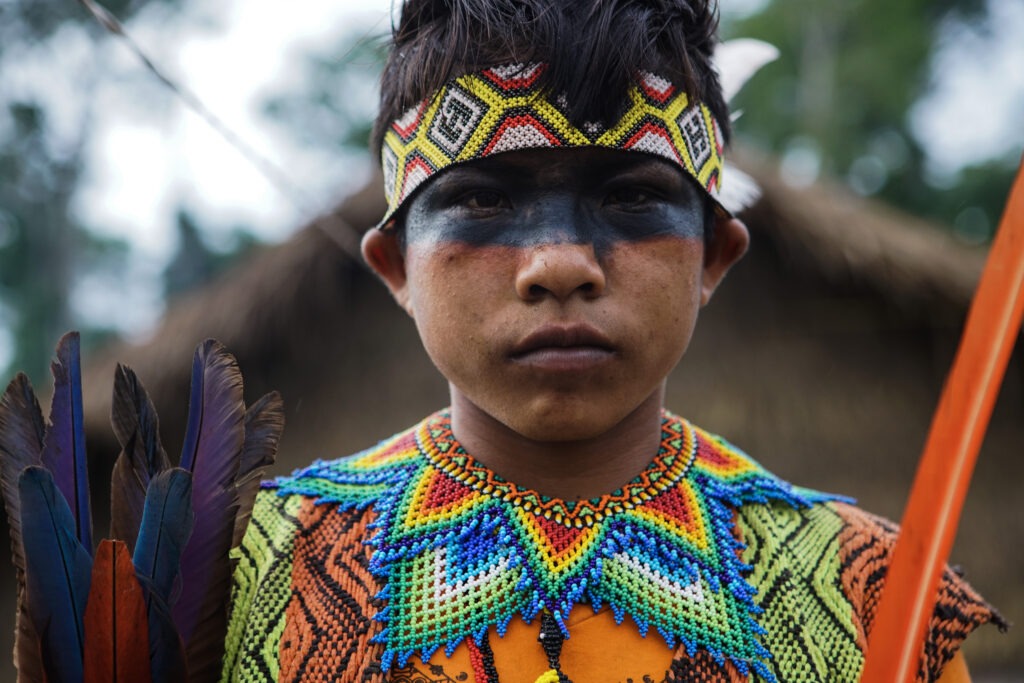
Sources and Verification
Official documentation:
Indigenous Declarations for COP30:

- COICA Pre-COP Indigenous (Brasilia, October 2025)
- Joint Declaration Amazonia-Pacific-Australia (April 2025)
- Official Position of Indigenous Peoples of the Amazon Region, V ACTO Summit (2025)
- APIB Indigenous NDC Declaration (August 2025)
International Legal Frameworks:
- UN Special Rapporteur on Rights of Indigenous Peoples (August 2025)
- UN Declaration on the Rights of Indigenous Peoples, art. 19 (FPIC), art. 31
- ILO Convention 169, art. 1(2) (self-identification as fundamental criterion)
Academic research:
- Ecology & Society (2024): colonial scientific paradigms and “vulnerability” frameworks
- Deforestation data: RAISG 2024
- Mongabay analysis COP26-COP29 coverage
Verified successful models:
- Mongabay: Indigenous desk, 8+ monthly stories, terminology protocols
- High Country News: “By, from and for Indigenous audiences”
- Democracy Now!: Direct Indigenous voice amplification
- Guardian: Indigenous editorial leadership (Lorena Allam)
Final Objective
🎯 Transform COP30 from extractive spectacle to territorial sovereignty journalism.
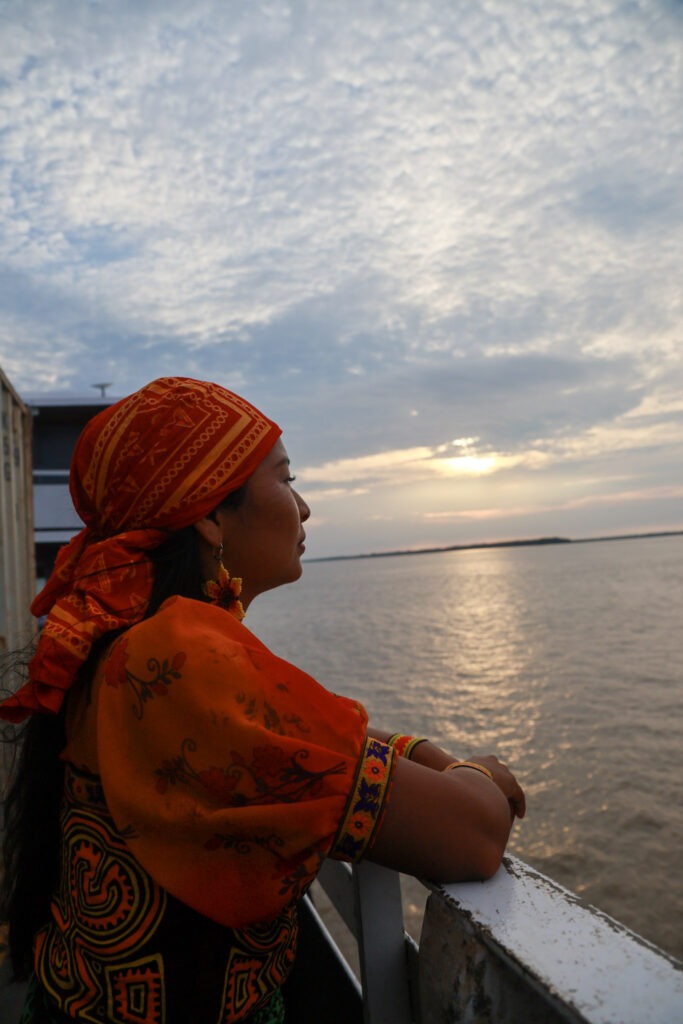
This toolkit is based on official declarations from COICA, APIB, COIAB and 18 months of research on narrative frameworks, political-environmental correlation, and documentation of successful Indigenous editorial authority models.
License: Creative Commons Share-Alike 4.0 for maximum distribution and adaptation.
“The greatest climate authorities are us, the guardians of the Earth, the Indigenous leaders.”
— Toya Manchineri, COIAB Coordinator
“We are the answer. All of us!”
— Official Indigenous COP30 slogan
#COP30 #IndigenousSovereignty #ClimateJustice #WeAreTheAnswer #LivingEcosystem
